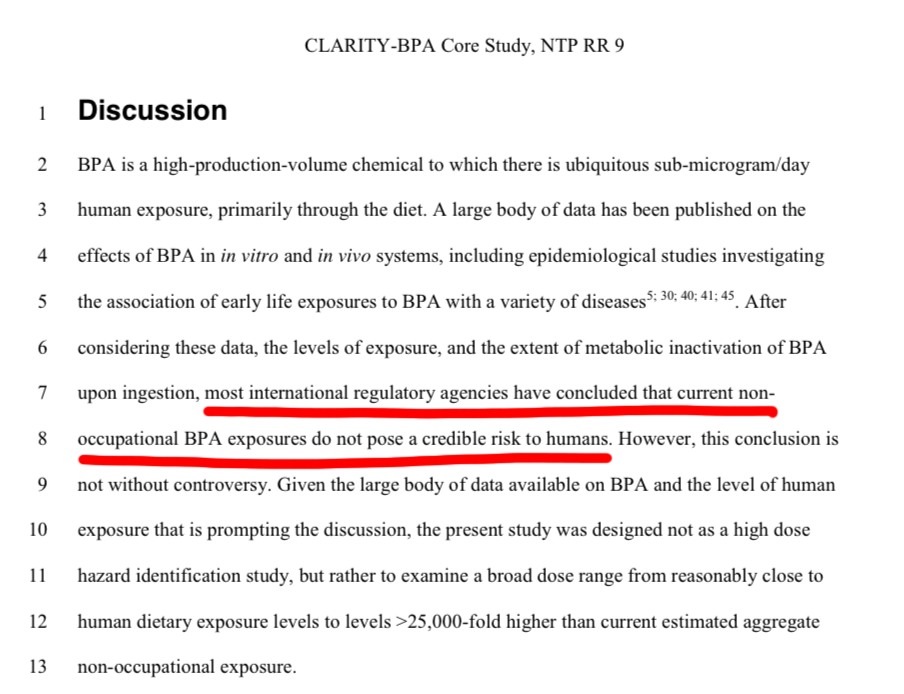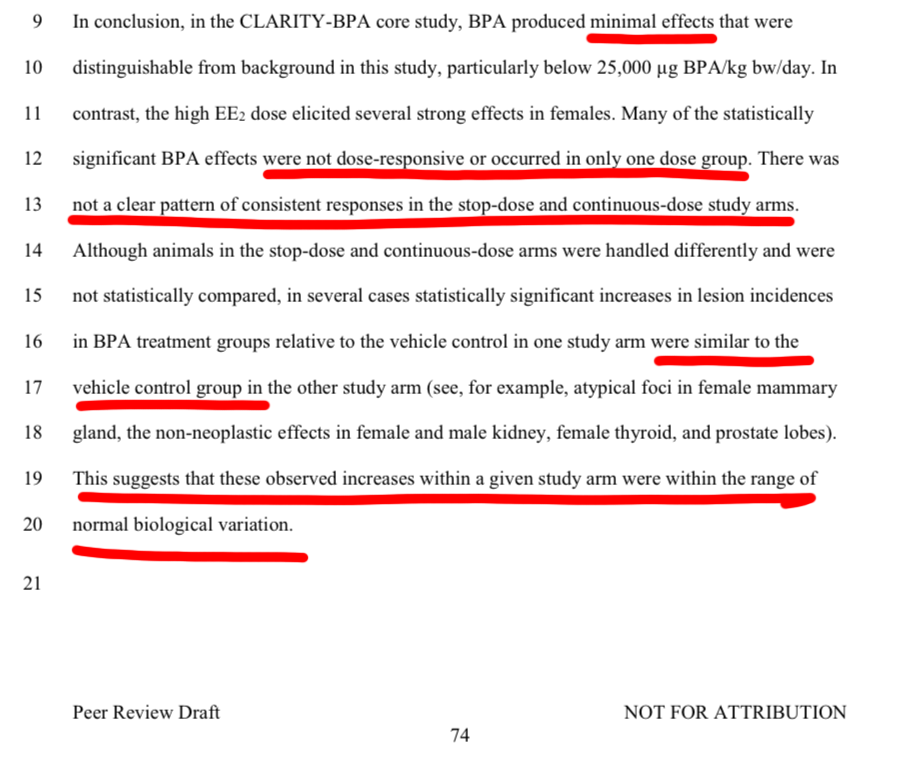The draft CLARITY-BPA report should go a long way toward sweeping the “endocrine disrupter” scare into the ash bin of junk science history. BTW, JunkScience.com was there to point out the scare’s stupidity from the very beginning IN 1996.

Here’s the Federal Register notice about the new CLARITY-BPA report. There will be a public meeting about it on April 26, 2018.
Click here for draft report.
Below are the key excerpts.
The first notes that, even before the CLARITY-BPA project began, there was no reason to believe BPA causes harm to consumers.

This excerpt (the focus of the April 26 hearing) reports that new carefully designed testing in animals does not change the conclusion that BPA causes no harm.

Take a walk down memory lane, read Steve Milloy’s “Our Swollen Future: The 60 Minuts Interview from October 1996.”
Don’t forget Milloy’s FOXNews.com column (below) about the adjudicated scientific misconduct of the “study” that kicked off the endocrine disrupter scare.
###
EPA Program Based on False Information
By Steven Milloy
Published November 09, 2001, Fox News
A scientific study that spawned a federal law requiring the testing of chemicals for their potential to interfere with hormonal processes has been found to be the product of scientific misconduct.
The federal Office of Research Integrity just ruled that Steven F. Arnold, a former researcher at the Tulane University Center for Bioenvironmental Research, “committed scientific misconduct by intentionally falsifying the research results published in the journal Science and by providing falsified and fabricated materials to investigating officials.” Arnold lied and then covered up.
The ORI also found that, “there is no original data or other corroborating evidence to support the research results and conclusions reported in the Science paper as a whole.”
The disturbing tale began in 1996 with the publication of the book Our Stolen Future: Are We Threatening Our Fertility, Intelligence and Survival? — A Scientific Detective Story. The book was a compendium of loosely told anecdotes that attempted to implicate chemicals in the environment and our food — such as PCBs, pesticides and plastics — as the cause of diseases ranging from cancer to infertility to attention deficit disorder.
The authors of Our Stolen Future speculated that these chemicals — so-called “environmental estrogens” or “endocrine disrupters” — disrupted normal hormonal processes, even at low exposure levels generally accepted as safe.
Although Our Stolen Future initially received a great deal of media attention, it soon died out amid much criticism from many respected scientists. But just when the fury faded, Arnold and his Tulane gang published their study in June 1996, claiming that combinations of pesticides and PCBs were up to 1,000 times more potent as endocrine disrupters than the individual chemicals alone.
“The new study is the strongest evidence to date that combinations of estrogenic chemicals may be potent enough to significantly increase the risk of breast cancer, prostate cancer, birth defects and other major health concerns, ” said then-EPA chief Carol Browner.
“I was astounded by the findings,” said then-EPA pesticide chief Lynn Goldman. “I just can’t remember a time where I’ve seen data so persuasive … The results are very clean looking.”
The study received a great deal of publicity that stampeded Congress into passing a bill in July 1996, signed into law by President Clinton, requiring the EPA to develop a program for screening thousands of chemicals for their ability to act as endocrine disrupters.
The EPA’s Endocrine Disrupter Screening Program now underway only costs about $10 million per year. But the cost to industry and consumers will likely stretch into the billions of dollars. Testing of a single chemical can easily reach into the millions of dollars.
The Arnold study began to unravel a mere six months after publication. Scientists from around the world began to report that they could not reproduce Arnold’s results — such replication of results being a requirement for findings to be considered as “scientific.”
By August 1997, Arnold was forced to retract his study from publication. His retraction stated, “We … have not been able to reproduce the results we reported.” He later added, “I can’t really explain the original findings.”
Now we know why — he cheated. The penalty imposed on Arnold was a five-year ban from federal grants.
Although a lifetime ban and perhaps even criminal prosecution would have been more appropriate — after all, he was found guilty of “intentionally falsifying” taxpayer-funded research — the light penalty is not the most disturbing part of this story.
Arnold’s study has been thoroughly trashed, but the federal law remains and the mandated EPA testing program is in full bloom.
In August 1999, an expert committee of the National Academy of Sciences’ National Research Council — a panel that included scientist representatives from the environmental activist community — reported there was no evidence that chemicals in the environment were disrupting hormonal processes in humans and wildlife.
That scientific report was inexplicably insufficient to kill the endocrine disrupter scare. But now, if proven fraud isn’t enough, what is?
Steven Milloy is the publisher of JunkScience.com , an adjunct scholar at the Cato Institute and the author of Junk Science Judo: Self-defense Against Health Scares and Scams (Cato Institute, 2001).